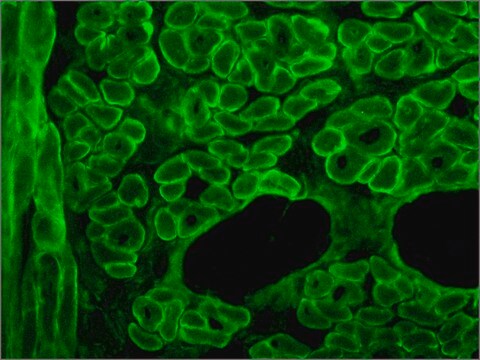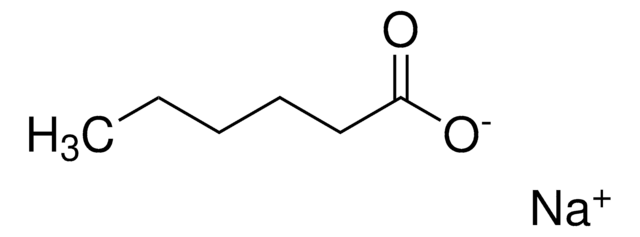D8768
cis-4,7,10,13,16,19-Docosahexaenoic acid sodium salt
≥95%, waxy solid
Sinonimo/i:
Sodium (all-Z)-4,7,10,13,16,19-docosahexaenoate
About This Item
Prodotti consigliati
Origine biologica
cod liver oil
Livello qualitativo
Saggio
≥95%
Forma fisica
waxy solid
Gruppo funzionale
carboxylic acid
Tipo di lipide
omega FAs
Condizioni di spedizione
ambient
Temperatura di conservazione
−20°C
Stringa SMILE
CC/C=C\C/C=C\C/C=C\C/C=C\C/C=C\C/C=C\CCC(O[Na])=O
InChI
1S/C22H32O2.Na/c1-2-3-4-5-6-7-8-9-10-11-12-13-14-15-16-17-18-19-20-21-22(23)24;/h3-4,6-7,9-10,12-13,15-16,18-19H,2,5,8,11,14,17,20-21H2,1H3,(H,23,24);/q;+1/p-1/b4-3-,7-6-,10-9-,13-12-,16-15-,19-18-;
SNNDEWVSGZRIFE-FPYKSTABSA-M
Codice della classe di stoccaggio
11 - Combustible Solids
Classe di pericolosità dell'acqua (WGK)
WGK 3
Punto d’infiammabilità (°F)
Not applicable
Punto d’infiammabilità (°C)
Not applicable
Dispositivi di protezione individuale
Eyeshields, Gloves, type N95 (US)
Certificati d'analisi (COA)
Cerca il Certificati d'analisi (COA) digitando il numero di lotto/batch corrispondente. I numeri di lotto o di batch sono stampati sull'etichetta dei prodotti dopo la parola ‘Lotto’ o ‘Batch’.
Possiedi già questo prodotto?
I documenti relativi ai prodotti acquistati recentemente sono disponibili nell’Archivio dei documenti.
I clienti hanno visto anche
Il team dei nostri ricercatori vanta grande esperienza in tutte le aree della ricerca quali Life Science, scienza dei materiali, sintesi chimica, cromatografia, discipline analitiche, ecc..
Contatta l'Assistenza Tecnica.













